See Bizarre Martian Dunes and More of the Best Space Images of the Week
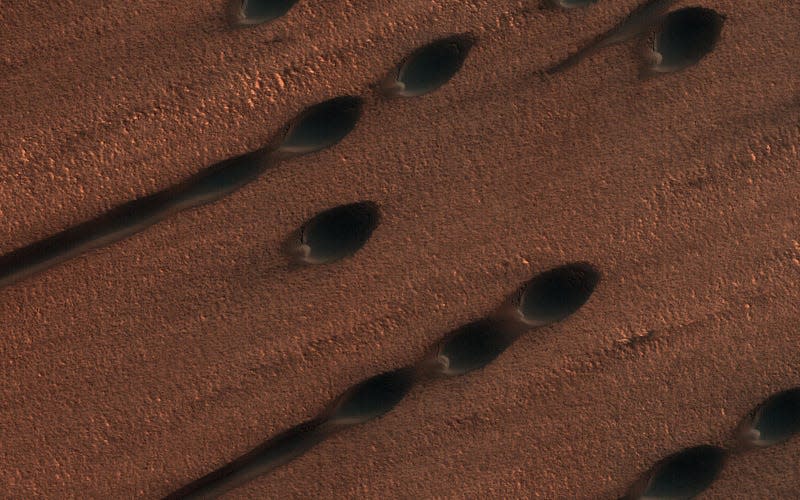
March madness has taken hold of space exploration, with red-hot rockets, gravity-defying hops, and dramatic explosions being just a few of the many captivating highlights from the past few weeks.
I’m cheating a bit, here. Our weekly slideshow didn’t go out last Friday, so we’re combining two weeks into one. I’m sure you won’t mind, so let’s blast off into our next great space-themed adventure.
Gateway to Mars
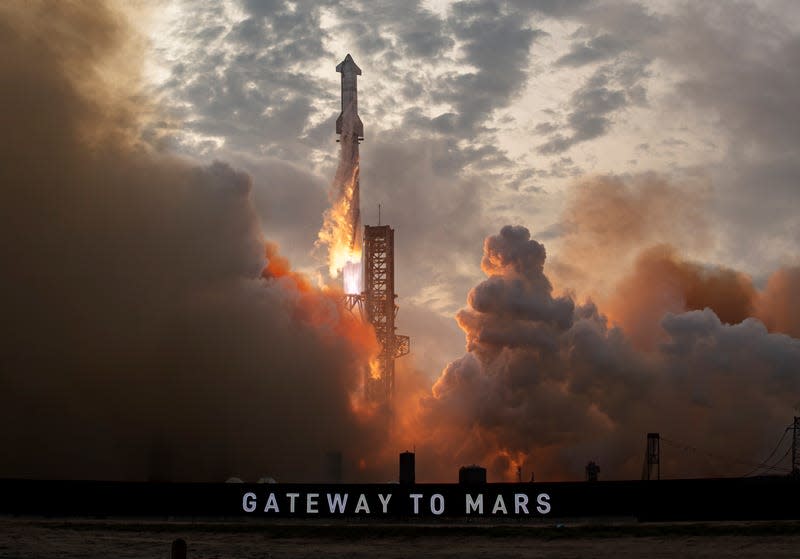
A third Starship prototype blasted off from SpaceX’s Boca Chica facility in Texas on March 14, achieving a number of key milestones. And yes, the Starbase entrance is adorned with a sign that reads, “Gateway to Mars,” proclaiming SpaceX’s ultimate intention for the megarocket.
Plumes of plasma
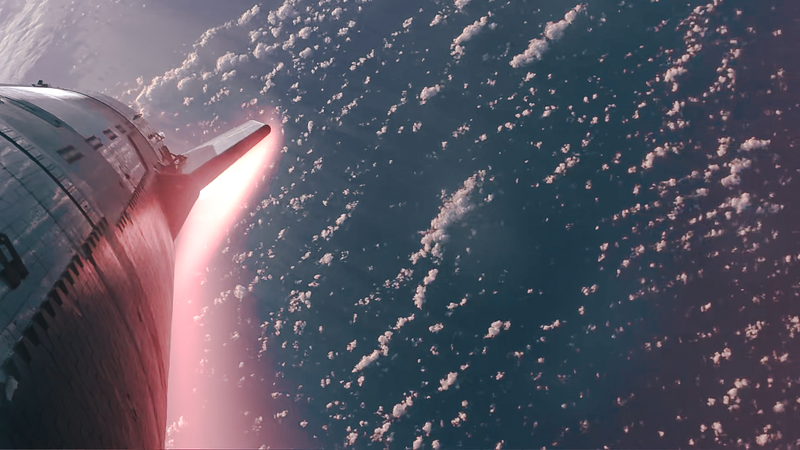
Starship broke up upon reentry, but not before creating a spectacular visual display, with its upper stage enveloped in plasma. This happens to incoming spacecraft due to extreme heat and friction generated as as the object moves at high speeds through the atmosphere. Plasma, typically referred to as the fourth state of matter, is an ionized gas consisting of free electrons and ions.
Home sweet home

Crew-7 returned from the International Space Station on March 12. This image shows the support team working around SpaceX’s Endurance spacecraft shortly after landing in the Gulf of Mexico. Waiting inside the Crew Dragon is NASA astronaut Jasmin Moghbeli, ESA astronaut Andreas Mogensen, JAXA astronaut Satoshi Furukawa, and Roscosmos cosmonaut Konstantin Borisov. The quartet spent nearly six months in the ISS.
Hypersonic test

On March 9, Stratolaunch performed the first powered test flight of its Talon-A hypersonic vehicle. Released from the Roc carrier—the world’s largest airplane—Talon-A flew at speeds reaching Mach 5 and an altitude of around 35,000 feet (10,688 meters). Stratolaunch is developing the system for the Pentagon, but future versions could allow for spaceflight applications.
Resupply mission
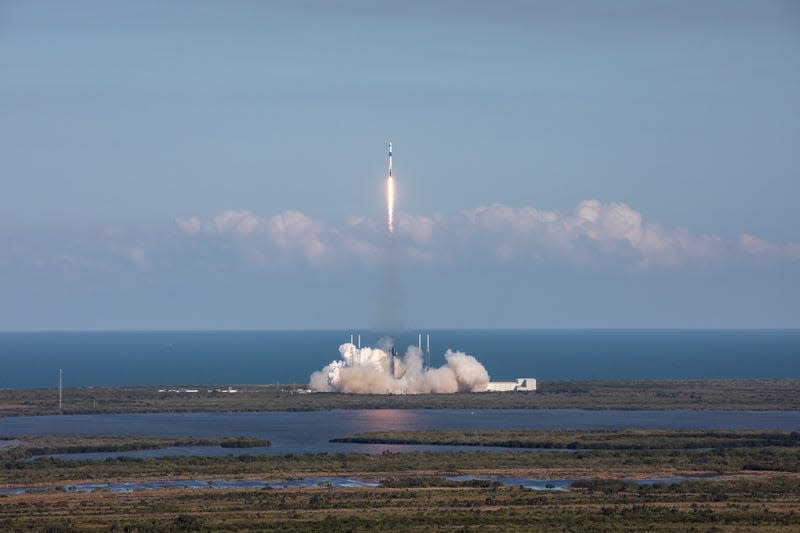
SpaceX’s 30th Commercial Resupply Services mission for NASA took flight on March 21, delivering more than 6,200 pounds of cargo to the International Space Station. A diverse array of NASA and partner research projects were on board the Falcon 9, including an investigation into plant metabolism in space, new sensors for the free-flying Astrobee robots, a fluid physics study aimed at advancing solar cell technology, and a Canadian Space Agency university project designed to monitor sea ice and ocean conditions.
The hot flames of progress
Firefly Aerospace took another step forward in the development of its Miranda engine, which will eventually power the first stage of Northrop Grumman’s Antares 330 and new Medium Launch Vehicle (MLV). For this latest hot fire test, Firefly tested its proprietary tap-off combustion cycle. “This development engine features a truncated nozzle to enable rapid iteration while characterizing engine performance,” the company said on X.
Coloring assignment!

United Launch Alliance is preparing to launch its storied Delta V Heavy, dubbed “The Most Metal of Rockets,” for the very last time. To commemorate its retirement, ULA is providing a coloring sheet to encourage some creative artwork. The triple-core rocket will perform its finale on March 28.
Piecing it together
#Ariane6 update: the upper stage and core stage are now assembled, forming the central core for Ariane 6's first flight. Next: verticalisation🚀https://t.co/VEg3edPxuQ pic.twitter.com/9424R753B4
— Josef Aschbacher (@AschbacherJosef) March 22, 2024
The European Space Agency is making good progress with the Ariane 6 project, steadily preparing the rocket for its first flight. The upper stage and core stage were assembled at ESA’s spaceport in Kourou, French Guiana. Once it’s integrated, the two-stage core will be taken to the launch pad and positioned vertically. Europe is in sore need of its own rockets, so the launch can’t happen soon enough.
The beautiful beyond
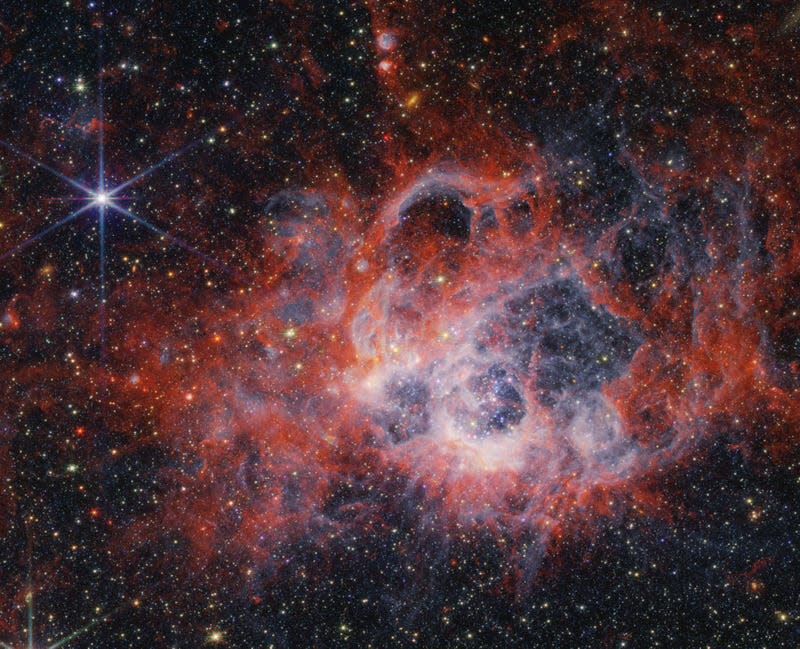
The Webb Space Telescope captured this stunning image of star-forming region NGC 604, and it shows how “stellar winds from bright, hot young stars carve out cavities in surrounding gas and dust,” according to ESA.
Kaboom!
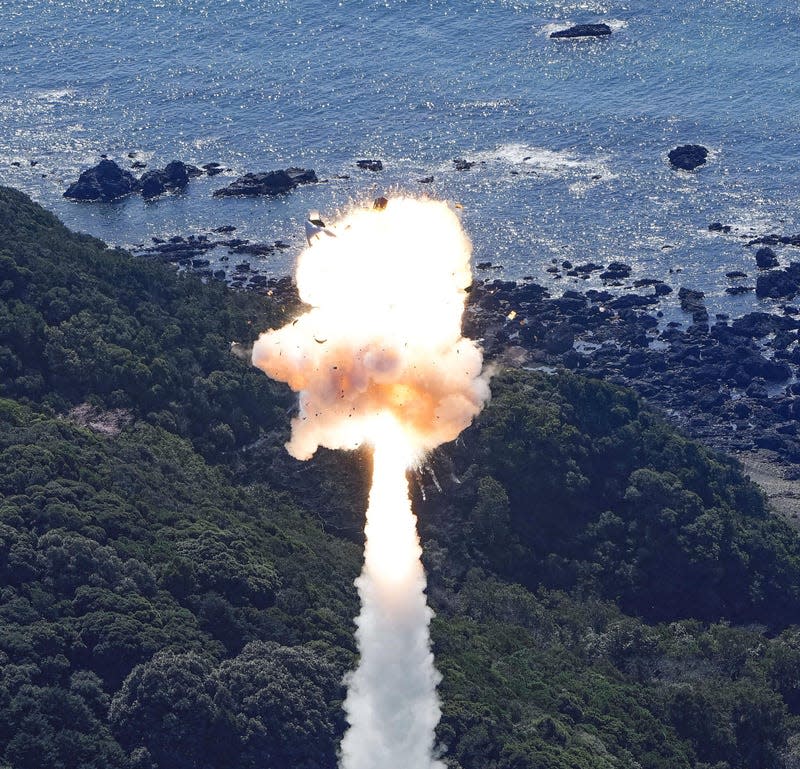
The inaugural launch of Space One’s Kairos rocket didn’t go so well on March 12. The light-lift launch vehicle, carrying an experimental satellite for the Japanese government, self-destructed a mere five seconds after lifting off from Space One Launch Pad at Space Port Kii. Space One failed in its attempt to be the first Japanese company to successfully launch a satellite into orbit, but the Tokyo-based company will surely learn from the failure and launch again soon.
Molecule-sniffing Webb
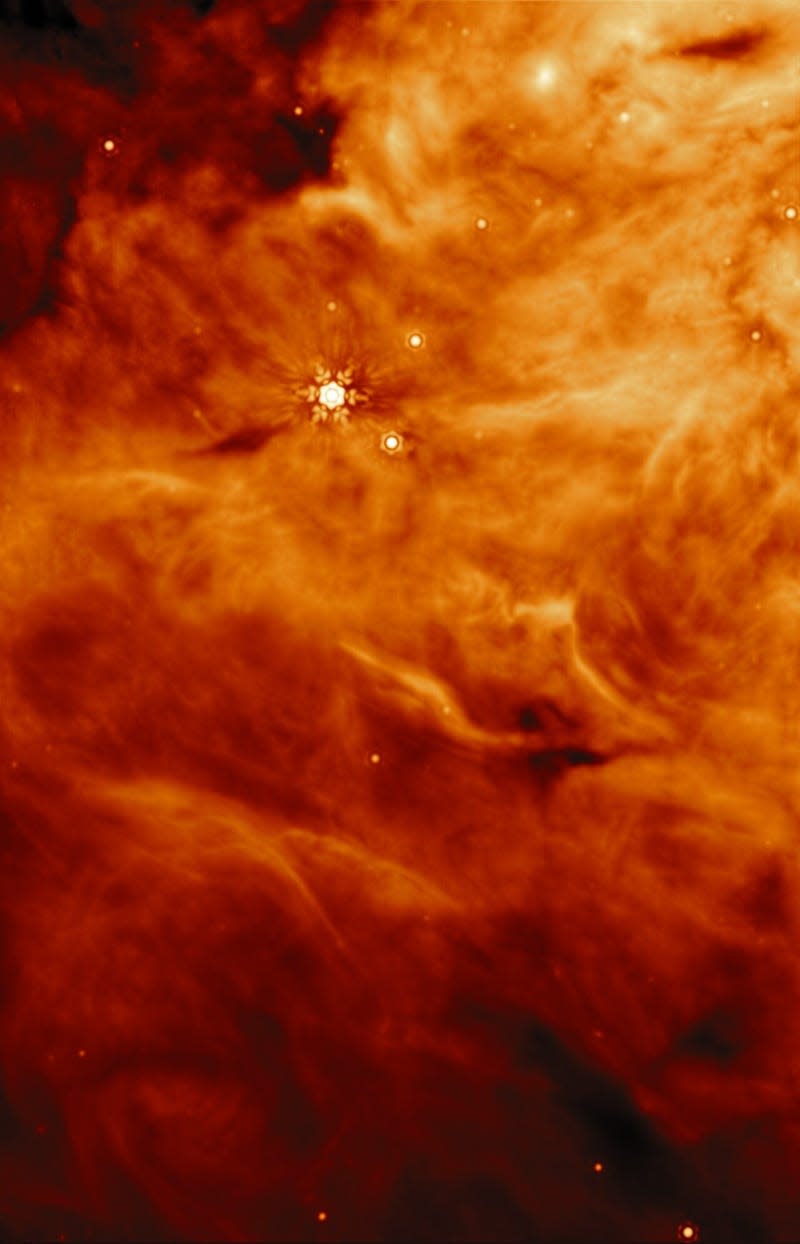
This image, captured by Webb’s Mid-Infrared Instrument (MIRI) , showcases a region near the protostar IRAS 23385. It’s a single exposure at a 15-micron wavelength, represented in orange. This study, under the James Webb Observations of Young ProtoStars (JOYS+) program, leveraged Webb’s unique capabilities to spot early-stage protostars, like IRAS 23385, which contain the essential components for creating habitable planets. MIRI’s exceptional power allowed for the identification of organic molecules in interstellar ices, including acetaldehyde, ethanol, methyl formate, and possibly acetic acid, providing insights into the chemical complexity of these nascent stellar environments.
Night flight
Earlier this week, Astrobotic’s Propulsion and Test department conducted Xodiac’s first night flight; Xodiac is a vertical-takeoff, vertical-landing (VTVL) rocket. This tethered test at night is a step towards the NASA TechLeap Prize’s Nighttime Precision Landing Challenge under the Flight Opportunities program, focusing on lunar surface mapping in near-total darkness.
Live and Let Fly
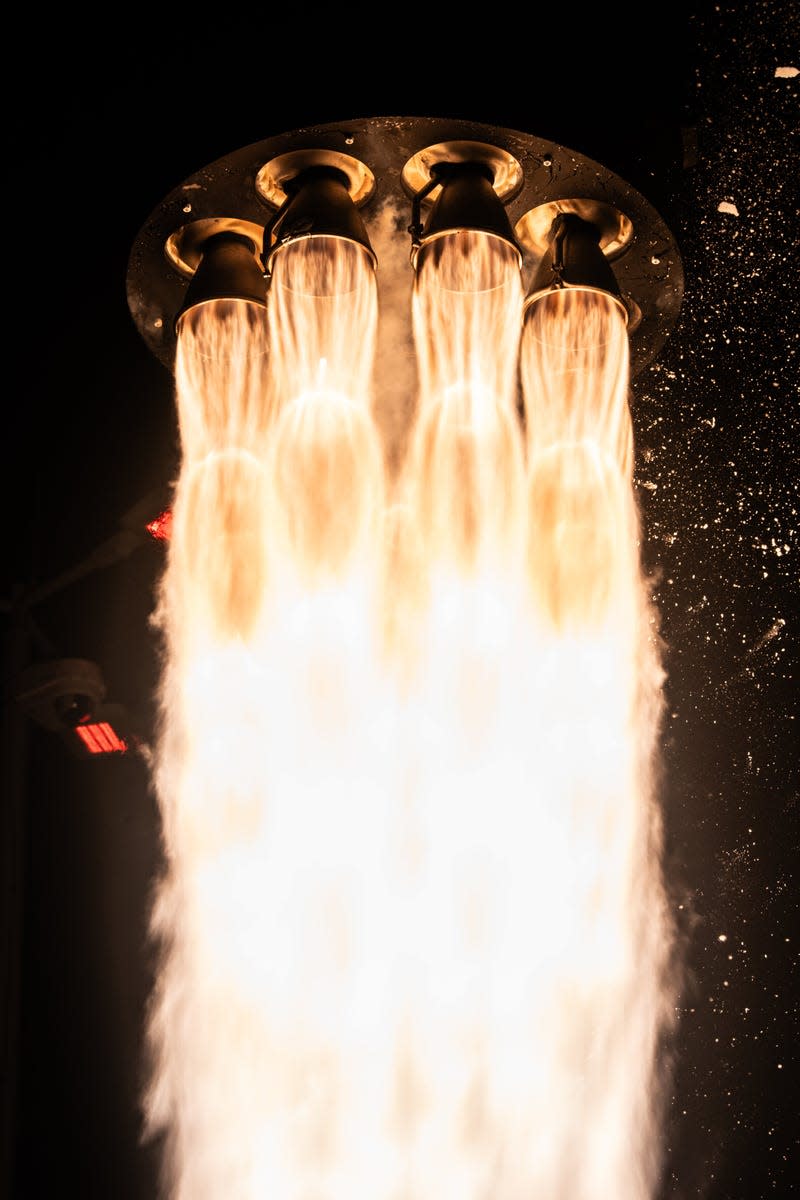
This spectacular plume is from a Rocket Lab Electron rocket, which blasted off on March 21 from Virginia Spaceport Authority’s Mid-Atlantic Regional Spaceport within the NASA Wallops Flight Facility in Virginia (gah, there’s gotta be an easier way to describe that place). Dubbed “Live And Let Fly,” the NROL-123 mission marked Rocket Lab’s debut launch for the NRO from the United States, following four successful launches for the agency from Launch Complex 1 in New Zealand’s Mahia Peninsula.
Weird dunes on Mars

This image, captured in January 2020 and released just last week, was taken by NASA’s Mars Reconnaissance Orbiter, and it shows two different sand dunes on Mars: barchan and linear dunes. NASA explains:
The small dots are called barchan dunes, and from their shape we can tell that they are upwind. The downwind dunes are long and linear. These two types of dune each show the wind direction in different ways: the barchans have a steep slope and crescent-shaped “horns” that point downwind, while the linear dunes are stretched out along the primary wind direction. Linear dunes, however, typically indicate at least two different prevailing winds, which stretch out the sand along their average direction.
Interestingly, the same phenomena can be found on Earth, including in Brazil and Saudi Arabia.
Twinkle twinkle thousands of stars
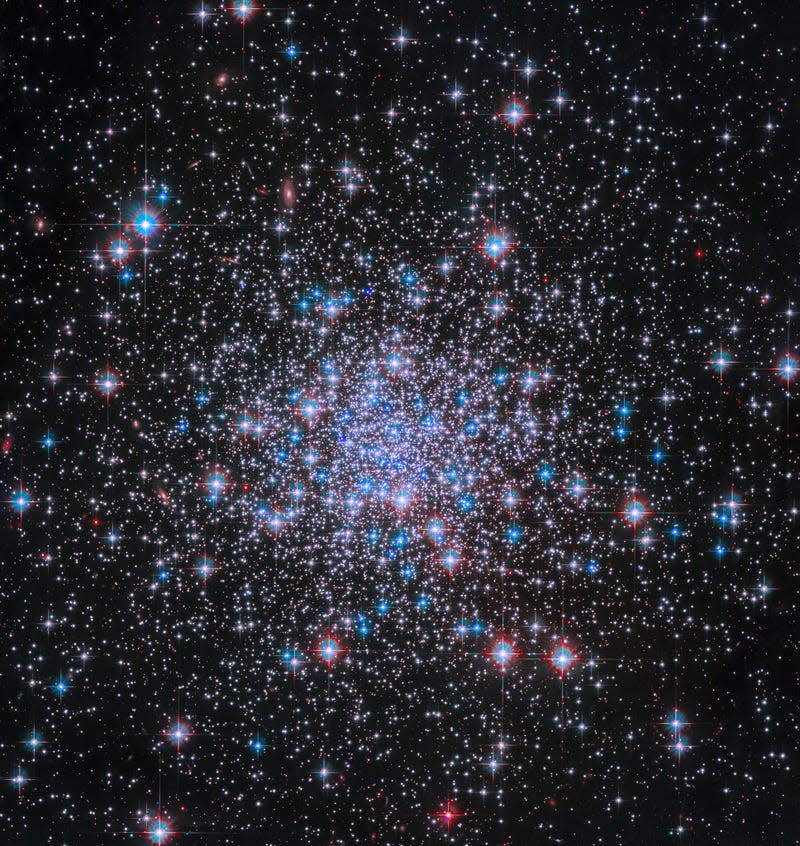
A recent image captured by the Hubble Space Telescope reveals the stunning NGC 2298 globular cluster, an assembly of thousands of stars bound by shared gravitational forces. Globular clusters like this one are generally populated by older stars and tend to loiter in the dust-filled peripheries of galaxies.
More: SpaceX Photobombs the Moon and More of the Week’s Best Space Images

